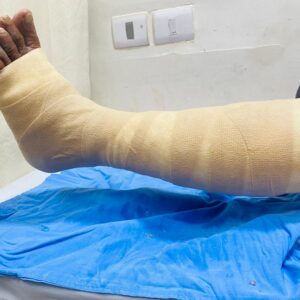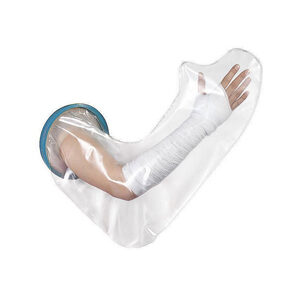Lymphedema Dressing (Leg)
Lymphedema Dressing (Leg)
Original price was: ₹5500.₹5000Current price is: ₹5000.
Lymphedema refers to swelling that generally occurs in one of your arms or legs. Sometimes both arms or both legs swell.It results from a blockage in your lymphatic system, which is part of your immune system.
Symptoms:
In the affected limb:
- Swelling of part or the entire limb, including the digits
- Heaviness or tightness
- Weakness
- Diminished joint flexibility
- Aching or discomfort
- Recurring infections
- Hardening, thickening, or discoloration of the overlying skin
Causes:
Primary lymphedema results from the abnormal development of the lymphatic system, often due to abnormal or missing lymph nodes or channels. Secondary lymphedema is caused by damage to the lymphatic system, most commonly from dissected lymph nodes as a result of cancer surgery. Other common causes of damage are infection, injury, radiation, and scar tissue resulting from radiation or surgery.
In the United States, the most common cause of lymphedema is damage to the lymphatic system resulting from breast cancer surgery, especially when followed by radiation therapy.
Worldwide, the most common cause of lymphedema is a parasitic infection called filariasis (philariasis), affecting millions of people in the sub-tropics and tropics of Africa, Asia, the Western Pacific, and certain regions of Central and South America.
Treatment:
While there is no cure for lymphedema, treatments exist to minimize discomfort and reduce the swelling in the affected area. Several forms of compression treatments are available to reduce swelling and prevent scarring of the overlying skin, including:
- Manual compression, a form of massage also known as manual lymph drainage
- Light exercise used to gently stimulate the muscles in limb to increase lymph flow.
Surgical treatments are also used in extreme cases to relieve pressure by removing excess tissue and fluid, but there are no surgical cures.
Complications:
The most serious and prevalent complication resulting from lymphedema is the increased vulnerability of the affected limb to infections. Any injury to the limb is a potential gateway to infection. Two common forms of infection are cellulitis, an inflammation of connective tissue as well as the dermal and subcutaneous layers of the skin, and lymphangitis, the inflammation of the lymphatic channels, also referred to as “blood poisoning”.
Another known complication is the formation of blood clots in the deep veins of the body, also known as deep vein thrombosis.
Lymphangiosarcoma, a rare soft tissue cancer affecting the lymphatic vessels, can also result from severe cases of chronic lymphedema.





